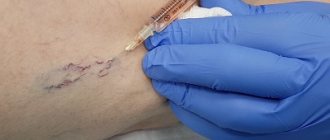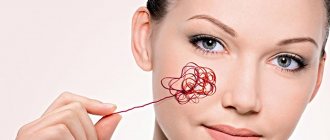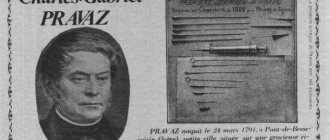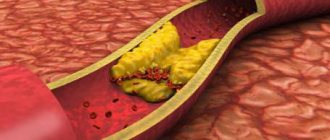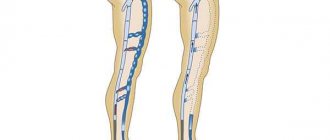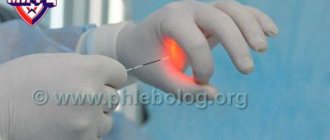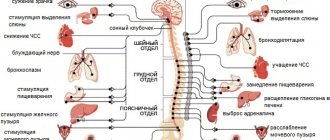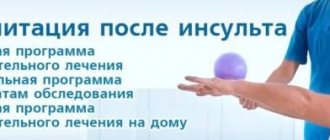What are spider veins and what are the methods for eliminating them?
7 clinics in Moscow since 1994 ☎ what you need to know about spider vein removal before choosing a clinic and other questions
Why spider vein removal is best done at Rednor Centers
have been working on the Russian market since 1994, during which time they have gained enormous experience and provided assistance to tens of thousands of patients. Our doctors are among the most experienced. By trusting us, you choose quality and safety.
Spider veins (or scientifically telangiectasia or rosacea) are persistent dilatations of small blood vessels in the skin that do not have an inflammatory cause and manifest themselves in the form of venous manifestations visible through the skin of the body, reminiscent of a cobweb or mesh. The appearance of such manifestations may be red, blue or purple
What is microsclerotherapy (removal) of telangiectasia (spider veins)?
Microsclerotherapy of telangiectasia (spider veins) is a modern cosmetic procedure aimed at removing small-diameter venous vessels by introducing substances (sclerosants) specially developed for this purpose into their lumen. The technique is based on the effect of a chemical burn of the inner wall of the asterisk with subsequent fibrosis of the vessel.
Microsclerotherapy procedure for telangiectasis
The microsclerotherapy procedure for telangiectasia is the “gold standard” for the removal of these vascular formations that arise from persistent dilatation of the smallest veins. This state of affairs is associated with a high aesthetic effect, safety and good tolerability of microsclerotherapy for telangiectasia.
Prevention of spider veins
In order to prevent recurrent cases of rosacea, it is recommended:
- Refrain from using low-quality decorative cosmetics , as well as aggressive care products and procedures (rough scrubs, mechanical manual cleaning, dermabrasion, laser resurfacing, liquid nitrogen massage, etc.)
- Refuse thermal facial procedures - warming masks, compresses, paraffin applications
- Limit visits to saunas and baths
- Do not wash your face with hot water or take an excessively hot bath or shower.
- Reduce physical activity if it is too intense
- Use high SPF sunscreens
- Be careful when drinking hot and alcoholic drinks
- Stop smoking
What is telangiectasia (spider veins)
Telangiectasia (spider veins) is a persistent dilation of the smallest vessels of the skin: venules, arterioles and capillaries. The dilations of the smallest arteries rarely exceed a diameter of 0.2 mm and are predominantly red in color. These are red telangiectasia. To remove them, methods based on physical influence are used: radiofrequency and laser percutaneous exposure.
Types of spider veins
The clinical significance of telangiectasia is still discussed by leading European phlebologists. However, the contribution of telangiectasia to the development of symptoms of chronic venous insufficiency is rather exaggerated. The leading clinical significance of telangiectasia is a pronounced cosmetic defect. The so-called “blue” telangiectasias are dilated venules. It is these formations that are the leading reason for turning to an aesthetic phlebologist.
What is the method of microsclerotherapy for telangiectasia (spider veins) based on?
The microsclerotherapy technique is based on the chemical effect of special substances (sclerosants) on the inner wall of the vessel, followed by its exclusion from the bloodstream and resorption.
Spider vein removal procedure
A very important point in this process is the absence of damaging effects on healthy venous vessels. This happens because in a normally functioning vein there is a fairly high blood flow rate and the sclerosant is quickly diluted to a concentration that does not have a damaging effect.
A good modern sclerosant, as it should be
A good modern sclerosant should have the following properties:
- The substance must not be toxic to the human body
- The sclerosing effect should be caused only by a strictly defined concentration of the drug, subject to prolonged contact with the vein wall
- No allergic reactions to sclerosant
- The drug must have the necessary strength to obliterate sufficiently large vessels, and be safe in case of extravasation (going beyond the boundaries of the vessel)
- The drug should not cause scarring or skin pigmentation effects
- No pain effect on drug administration
- The sclerosant must have good solubility in physiological solution.
How does rosacea manifest itself?
As a rule, this is a completely painless problem that causes only aesthetic discomfort. However, some patients may complain of intermittent itching or burning sensation in the area of the affected vessels.
Sometimes spider veins on the face appear against the background of liver disease . In this case, this may be accompanied by yellowing of the skin, sclera and mucous membranes, as well as lightening of stool and darkening of urine.
If rosacea develops against the background of autoimmune pathologies and connective tissue diseases, then this is accompanied by inflammatory processes and damage to large vessels.
Types of modern sclerosants
All modern sclerosants can belong to one of the following groups:
- Detergent preparations. The chemical structure of these substances is based on fatty acids or alcohols. The mechanism of their action is based on the extraction of protein molecules from the surface membrane of the endothelial cell of venous vessels, the cell is irreversibly damaged and dies. This effect works only in the range of a certain sclerosant concentration, below which there is no effect on vascular cells. This group is represented by the following drugs:
- Ethoxysclerol (Polidocanol).
- Sodium tetradecyl sulfate (fiberwein).
Everything is ready for microsclerotherapy
In addition to these drugs, the following detergents are also used in the world: sodium morruate, ethanolamine oleate, glycerin.
- Cell toxin preparations are used by some specialists for sclerosis of vascular formations.
- Hypertonic and ionic solutions. Modern European phlebologists also use the following sclerosants of this group:
- Hypertonic sodium chloride solution (20 and 23.4% solutions).
- Sclerodex (a combination of a solution of 25% glucose and 10% sodium chloride).
- Ionized iodine preparations (variglobin, sclerodin).
- 75% glucose solution.
In Russia today only drugs from the detergent group are approved for use: polidocanol (ethoxysclerol) and tetradecyl sulfate (fiberwein). The issue of admitting 75% glucose solution into medical phlebological practice is being actively resolved.
Microsclerotherapy techniques used in the Moscow City
At the Moscow City Phlebology Center we use only the most modern types of microsclerotherapy (scleroobliteration of veins).
Sclerosants for microsclerotherapy
- Telangiectasia (spider veins), diameter up to 1 mm, are removed using a liquid form of the drug: polidocanol (0.25 - 0.75%), tetradecyl sulfate (0.1 - 0.2%).
- To remove venulectasias (diameter 1-2 mm) and reticular veins (2-4 mm), both microsclerotherapy solution and microfoam sclerotherapy (foam-form) are used. Concentration of active substance: polidocanol - 0.5-1%, sodium tetradecyl sulfate - 0.25-0.4%.
Diagnosis of the disease
Diagnosis of the disease at the center for non-invasive surgery and phlebology GMS Clinic includes:
- examination by a doctor - vascular surgeon, phlebologist;
- detailed analysis of anamnestic data of life and illness;
- performing ultrasound of blood vessels;
- consultation with a highly specialized specialist - cardiologist, endocrinologist, gynecologist (if necessary);
- additional diagnostic methods - laboratory blood tests.
After a comprehensive examination, the doctor confirms the diagnosis and prescribes the necessary treatment.
Indications for spider vein removal in Moscow
The microsclerotherapy procedure in the presence of telangiectatic disease and reticular varicose veins in leading European clinics is carried out for cosmetic reasons. Often, when a large number of small vessels are removed, patients note an improvement not only in self-esteem, but also in sensations in the leg area. This is due to the elimination of the pathological venous bed and the elimination of symptoms of venous stagnation. Good phlebological practice involves diagnosing the venous system before starting microsclerotherapy procedures. Often, dilation of the smallest vessels is associated with disruption of the valve apparatus of the main saphenous veins, even without the formation of visible varicose veins. According to the standards of European phlebology clinics, such diagnostics are carried out for all patients, even if the complaints consist only of the presence of telangiectasis.
Laser coagulation method
The essence of the procedure is that the laser seals the walls of damaged vessels, which prevents the flow of blood into them, due to which the network of capillaries becomes completely invisible.
The advantages of the technique are its painlessness, the absence of any marks on the skin after the course of treatment. In addition, I note that this does not cause any harm to the entire circulatory system.
Sessions can be held both in winter and summer. The duration of one procedure is about forty minutes. The number of appointments with a cosmetologist in this case will depend on the degree of complexity of the disease. At the initial stage of rosacea, four sessions may be enough, but to get rid of advanced rosacea, it is best to spend at least seven.
It is important not to use any cosmetics during the treatment period; the effect of such therapy will be noticeable on the third or fourth day.
Contraindications to microsclerotherapy
The microsclerotherapy procedure for telangiectasia is an innovative, fairly safe, planned procedure. But, as with absolutely any invasive technique, it has contraindications:
- Skin diseases in the area of intervention of an inflammatory and infectious nature.
- Acute period of deep or superficial vein thrombosis.
- Pregnancy and lactation period.
- Allergic reaction to sclerosant.
- Presence of thrombophilia (hypercoagulable state).
- Impaired motor activity of the patient.
- The presence of an open oval window of the heart (for the use of a foam form of the drug).
- Lymphostasis.
Adequate compression after the procedure significantly improves the aesthetic result. Therefore, aesthetic microsclerotherapy in patients for whom compression therapy is contraindicated is not contraindicated, but has its own nuances.
In the presence of morbid obesity, as a rule, a larger number of microsclerotherapy sessions are required and difficulties in selecting compression stockings are required. During long flights and hormonal therapy, it is better to refrain from aesthetic procedures and perform it later.
INJECTION METHODS FOR TREATING COUPEROSIS
Along with advanced hardware, GMTClinic uses effective injection technologies, such as plasma therapy and bioreparation, which act as additional solutions and help prolong the effect obtained.
Plasma therapy is a unique procedure based on skin rejuvenation at the cellular level. Enriched plasma taken from the venous blood of the patient himself is used as a catalyst for rejuvenating processes.
Bioreparation is also a popular and reliable injection technique, which GMTClinic specialists successfully use as a complement to laser removal of rosacea. Bioreparation activates the internal resources of cells, enhancing the production of collagen and elastin.
Anti-rosacea aesthetic facial treatments and peelings can also help.
How is the microsclerotherapy procedure performed in a modern phlebological center in Moscow?
In our phlebological center, we use some of the best thinnest needles with laser sharpening of 27-30 G. Using these tools, skin punctures are made that are practically not felt by patients. The procedure is performed by an experienced phlebologist, who has not only thousands of procedures under his belt, but also a significant number of master classes on this technology.
Master class performed by phlebologist Semenov A.Yu. on microsclerotherapy
Sessions are carried out with the patient in a horizontal position. After puncturing the skin, the tip of the needle enters the vessel, the specialist slowly and carefully injects the drug, making sure that the vein does not overstretch and rupture.
After the session, sterile bandages are applied and compression stockings are put on. The patient is recommended to take a half-hour walk.
Complications and side effects after a microsclerotherapy session
Minor ecchymosis (bruising) at the injection sites after the procedure is almost all that worries patients. These phenomena disappear within 1-2 weeks. Complications and side effects of sclerotherapy are quite rare, but you still need to know about them:
- Skin hyperpigmentation is a fairly rare phenomenon and goes away on its own within 6-12 months.
- Local tissue swelling. It resolves on its own and does not require separate treatment.
- Neurological complications: migraine-like headache, temporary impairment of visual fields, extremely rare complications that arise when working with the foam form of sclerosant in patients with congenital heart disease (patent foramen ovale). These phenomena disappear on their own within 10-15 minutes.
- Metting is the appearance of the finest red telangiectasia in the injection area. These manifestations disappear within a few months.
- Skin necrosis occurs when sclerosant enters the perivascular tissue in high concentrations. This is a very rare occurrence and is most often associated with improper manipulation technique.
- Allergic reactions to the drug. Modern sclerosants rarely cause sensitization of the body, but you should always remember this phenomenon.
Cuperosis and vascular network on the face
As we mentioned earlier, this is a superficial manifestation of blood vessels on our skin. Many things can provoke this effect. An elementary increase in temperature, a contrasting transition after a winter street and frost into a warm room, excitement, stress or another reaction of the body when blood circulation increases and blood vessels lose their elasticity and expand. All this can appear on the surface of the skin in the form of unpleasant reddish “patterns”. They are often accompanied by side effects that further negatively affect the condition of the skin: the skin “burns” and dries, peeling and itching appear. Sometimes such irritation even leads to skin injury. All this is very sad and does not contribute to a good mood and confidence in one’s beauty.
Make an appointment at the clinic on Vasilyevsky Island
Sign up
Cosmetic microsclerotherapy (microscleroobliteration) at the Moscow Phlebology Center
The microsclerotherapy method is deservedly called the “gold standard” for the removal of telangiectasia. Due to its minimal invasiveness, good patient tolerance and good clinical effect, the microsclerotherapy technique has taken its rightful place in modern phlebological practice. Cosmetic microsclerotherapy at the Moscow City Phlebological Center is performed by some of the best phlebologists in Moscow and Russia according to the most modern European standards.
Microsclerotherapy performed by phlebologist of the MIFC Raskin V.V.
We use the most advanced technologies to achieve not only a good clinical effect, but also the best aesthetic result.
Microclerotherapy (removal) of stars in Moscow - price for procedures
At our center in Moscow, the price for the microsclerotherapy procedure is strictly fixed, and therefore, when contacting our clinic, patients can count on high-quality service, treatment and an affordable cost. And remember that timely consultation with a doctor will completely cure the disease and avoid its recurrence.
| Service | Treatment category | Price |
| Sclerotherapy (microsclerotherapy) on one lower limb (one session) | Reticular varicose veins and spider veins | 8000₽ |
| Postoperative sclerotherapy (microsclerotherapy) on one lower limb (one session) | Reticular varicose veins and spider veins | 4000₽ 8000₽ |
| Sclerotherapy (microsclerotherapy) on one lower limb (course of treatment) | Does not depend on the number of sessions | 35000₽ |
| Removal of unaesthetic veins on one arm (one session) | 10000₽ | |
| Laser removal of spider veins on one lower limb (one session) | 10000₽ |
For the convenience of our patients, we work with banks that offer credit lines. Also in our center there is a flexible system of discounts and installments. Payment by Visa and Mastercard is possible. At the end of the course of treatment, the patient is given a package of documents to submit to the tax office for tax deduction.
Why you need to act immediately
Telangiectasia may be the first symptom of a serious vascular disease, the onset of an oncological process, or simply occur as a result of increased physical work or failure to maintain a healthy lifestyle. Therefore, you should not put off going to the doctor. It is necessary to conduct a timely examination by specialists, do examinations, differentiate the disease and make a diagnosis.
If you do not pay attention to spider veins, you can miss the occurrence of more serious diseases of the venous system and aggravate their course. After which it will no longer be possible to correct the situation using microsurgical technologies.
It is also worth noting that self-medication, warming and applying bandages with folk remedies is not worth it, as this can enlarge the area of spider veins, change their shape and increase their number.
Results of microsclerotherapy for telangiectasis. Photos before and after spider vein removal
The result of treating a patient at the MIFC phlebology clinic using microsclerotherapy (removal) of spider veins
Photos before and after removal of spider veins on the left thigh
Result of spider vein removal on the right lower limb
Result of spider vein removal 1 month after microsclerotherapy
Video result of spider vein removal in our patient on both lower extremities
Important!!!
The reason for the appearance of spider veins is a violation of venous circulation and changes in the elasticity of the capillary walls. The appearance of spider veins does NOT ALWAYS indicate the existence of post-thrombotic or varicose pathology. Likewise, and vice versa, the presence of diagnosed varicose veins does not mean that spider veins may appear.
If you observe manifestations of spider veins on your body, we recommend that you consult a doctor for advice and an accurate diagnosis.
Who gets spider veins?
Spider veins appear in both women and men. In women, spider veins appear much more often (about twice as many). Typically, women react more often to the appearance of spider veins, since such a defect on the skin irritates them and they want to get rid of it, regardless of the reasons for its appearance, while men react to these manifestations much less often, not paying due attention to it or not at all. ignoring.
Causes of spider veins
According to statistics, from 20 to 30% of the adult population of the planet have spider veins. Women are predominantly affected by this disease; in 80% of cases, the cause of spider veins in women is pregnancy and childbirth.
Other reasons for the appearance of spider veins include:
- Hereditary predisposition
- Postponed birth
- Hormonal disorders (including changes in hormonal levels during pregnancy and/or a history of abortions)
- As a result of the use of hormonal drugs (including hormonal contraceptives)
- Upon the onset of menopause (menopause)
- long-term venous insufficiency
- Decreased tone of the vessel walls (including age-related)
- Chronic gastrointestinal diseases (liver and intestines)
- Chronic diseases of the endocrine system
- Chronic diseases of the circulatory system (hypertension)
- Heavy physical activity (including high-intensity sports with a predominant load on the leg muscles, such as dancing, cycling, skiing and others)
- High stress on the legs due to prolonged wearing of high heels
- Professional working conditions (standing work)
- Excessive passion for baths and saunas
- Abuse of sunbathing (including solariums)
- Consequences after frostbite of the extremities
- Incorrectly performed cosmetic procedures (deep or excessively intense peeling)
- Presence of venous diseases (for example, varicose veins)
- Frequent and sudden changes in temperature
- Bleeding disorders
- Previous surgical operations
- Injuries
- Alcohol abuse
- Smoking
- Being overweight (the higher the percentage of obesity, the higher the chance of spider veins)
- Age (the likelihood of spider veins increases with age)
- Vitamin C hypovitaminosis
- Lifestyle with low physical activity (for example: sedentary work)
Questions from patients about the procedure of microsclerotherapy (removal) of spider veins
How much does modern microsclerotherapy for spider veins cost in Moscow?
A session of modern microsclerotherapy for spider veins in our Moscow city center costs 8 thousand rubles. You can find out more detailed information about the cost of treatment by phone or on our website page:.
Where is the best place to do microsclerotherapy for spider veins in Moscow?
Microsclerotherapy of spider veins in Moscow is best performed in a good city phlebology center, where they work according to modern European standards.
Is microsclerotherapy for telangiectasia and reticular veins performed simultaneously in Moscow?
Simultaneous microsclerotherapy sessions for telangiectasia and reticular veins are performed in the best Moscow clinics. This is a good procedure for quickly eliminating unsightly venous vessels.
Where can I read reviews about microsclerotherapy for spider veins and reticular veins?
Reviews from patients about microsclerotherapy for spider veins and reticular veins at the city phlebological center can be read on our website page: .
More about the disease
Vascular network (asterisk) is a small intradermal expansion of all types of vessels that lose their tone.
They can appear both on the skin of the face (the wings of the nose, cheeks) and on other parts of the body - legs, abdomen, thighs. This pathological process is persistent. If you once notice spider veins on your body, they will not disappear on their own.
Therefore, such manifestations cannot be ignored; it is necessary to seek medical help from a specialist.
You can make an appointment with a doctor at the GMS Hospital center at any time convenient for you. This can be done by calling a contact phone number or through the online system on our website.
